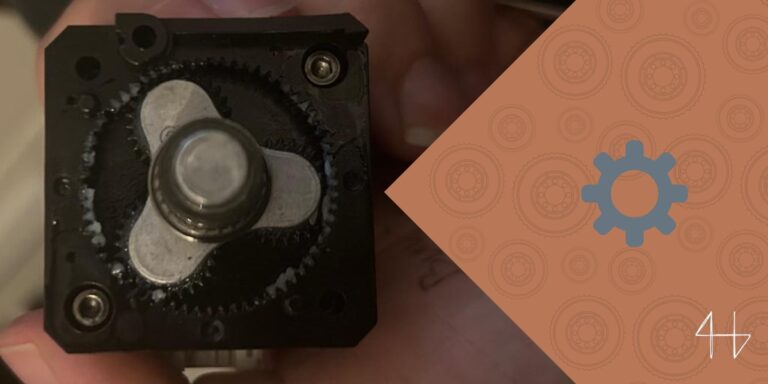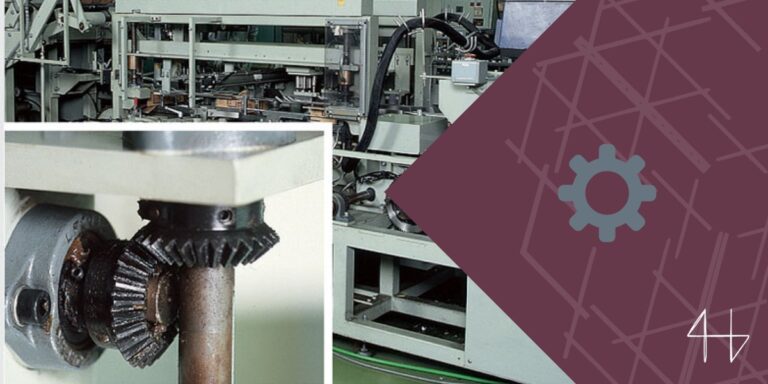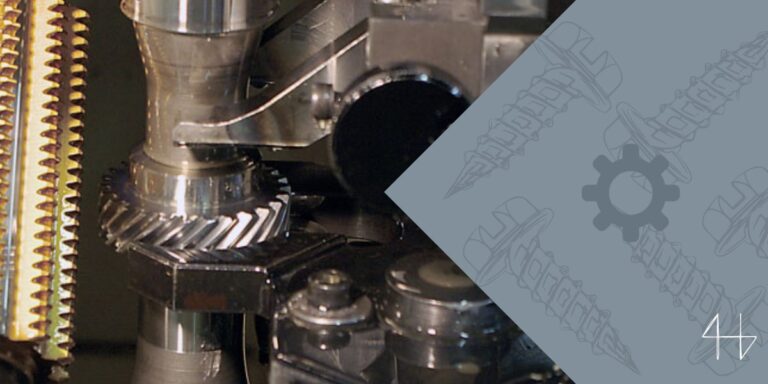Selecting the best microcontroller for IoT is crucial for your project’s success. My idea is that when starting personal projects, you need to optimise for completing the project. Not cost or performance but rather, making the process enjoyable so that you dont give up.
Your choice of MCU can have a huge impact on how much you will enjoy working with it.
Here I have reviewed the top MCUs for different needs, from advanced projects to budget solutions to help you decide which MCU will help you with your project.
Overview of the Best Microcontrollers for IoT
A myriad of MCUs is available for IoT development, each excelling in different areas. Here’s a quick rundown of the best microcontrollers for IoT in 2025:
- Best for Advanced Projects: STM32 Nucleo Board
- Best for Beginners: Arduino Uno REV3
- Best for Industrial Applications: ESP32-Gateway
- Best for Cellular Connectivity: Arduino MKR GSM 1400
- Best for Cloud Integration: Particle Photon
- Best for Compact Applications: Arduino Nano 33 IoT
- Best for Low Budget: NodeMCU
STM32 Nucleo Board – Best for Advanced IoT Projects
Price: $10-$40
Specifications:
- ARM Cortex-M series microcontroller (varies by model)
- Up to 512KB Flash memory, 128KB RAM
- Multiple communication interfaces: UART, SPI, I2C, CAN
- Onboard ST-Link debugger/programmer
Rating:
- Price: 5/5
- Design: 4/5
- Performance: 4/5
- Connectivity: 4/5
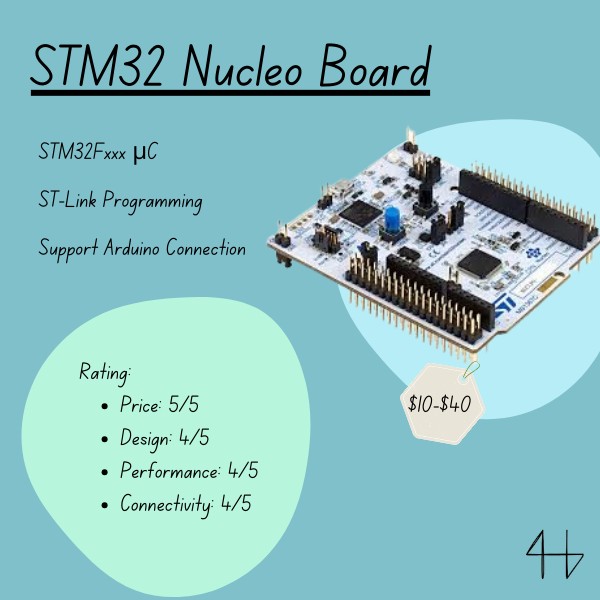
Product Pros
Product Cons
The STM32 Nucleo board is a versatile development platform designed for embedded systems and IoT applications. It focuses on real-time processing and efficient power consumption, making it ideal for sensor-based applications, robotics, and industrial automation.
With a wide selection of ARM Cortex-M microcontrollers, developers can choose the right balance between performance and efficiency. The built-in ST-Link debugger simplifies development, eliminating the need for external programming tools.
While the Nucleo board lacks the raw processing power and multimedia capabilities of a single board computer, like the Raspberry Pi, it excels in embedded applications where low power consumption and real-time control are critical.
Its extensive peripheral support and ease of integration make it an excellent choice for engineers and developers working on MCU-based projects.
Arduino Uno REV3 – Best for Beginners
Price: $20-$25
Specifications:
- 32KB of flash memory
- 1KB of built-in EEPROM
- 14 digital I/O pins
Rating:
- Price: 5/5
- Design: 4/5
- Performance: 3/5
- Beginner-friendliness: 5/5
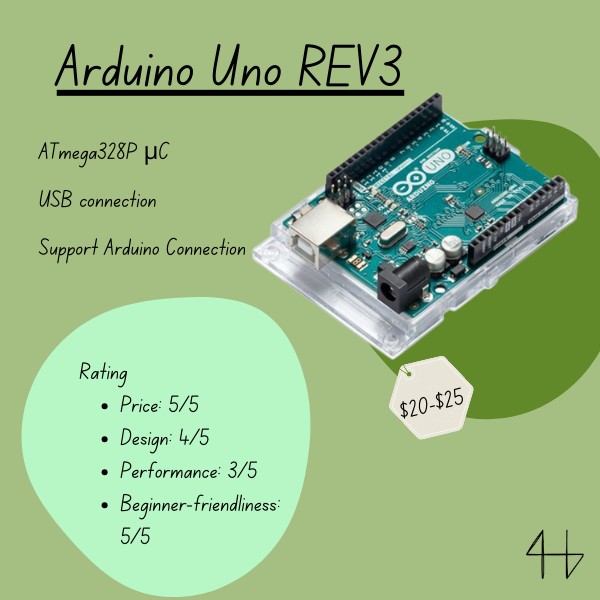
Product Pros
Product Cons
The Arduino Uno REV3 is renowned for its simplicity and ease of use, making it the ideal microcontroller for beginners.
With 32KB of flash memory, 1KB of built-in EEPROM, and 14 digital I/O pins, it provides just enough power to get started on small IoT projects without overwhelming new users. Its user-friendly design ensures that novices can experiment and learn without the fear of damaging the board.
While its limited memory and processing power might restrict its use in more advanced projects, the Arduino Uno REV3 shines in educational settings and for hobbyists.
Compared to other MCUs, it offers a perfect balance of simplicity and functionality, supported by a strong community that provides extensive libraries, documentation, and technical support.
ESP32-Gateway – Best for Industrial Applications
Price: $10-$20
Specifications:
- Runs on FreeRTOS
- Supports Bluetooth Low Energy, Wi-Fi, BLE 5.2, and Zigbee
Rating:
- Price: 4/5
- Design: 4/5
- Performance: 5/5
- Industrial applicability: 5/5
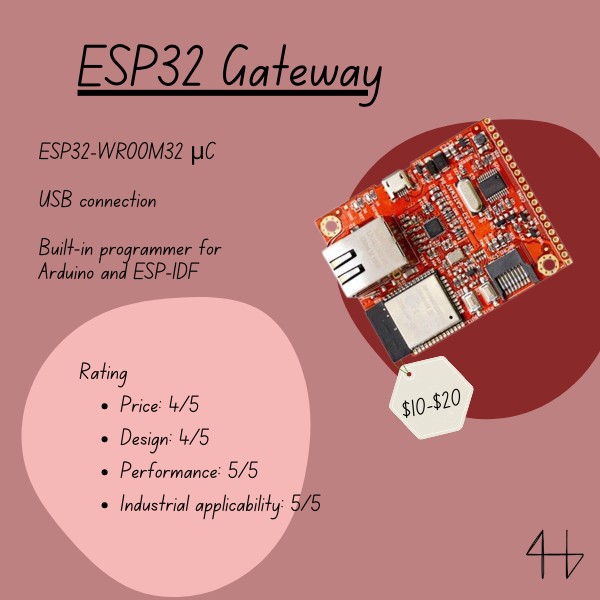
Product Pros
Product Cons
The ESP32-Gateway is a powerhouse in the realm of industrial IoT applications.
Running on FreeRTOS, it is tailored to handle multiple tasks efficiently, making it ideal for demanding industrial environments.
Its support for various connectivity options, including Bluetooth Low Energy, Wi-Fi, and protocols like BLE 5.2 and Zigbee, allows for versatile integration in monitoring systems and remote deployments.
While its complexity might be a hurdle for beginners, the ESP32-Gateway’s robustness and reliability make it a top choice for industrial applications. The ESP32’s ability to manage multiple connectivity options and real-time operations sets it apart from the other MCUs.
Arduino MKR GSM 1400 – Best for Cellular Connectivity
Price: $60-$70
Specifications:
- ATSAMD21 ARM Cortex-M0+ microcontroller
- Supports 2G and 3G cellular connectivity
- Various I/O interfaces: digital and analog pins, SPI, I2C, UART
Rating:
- Price: 3/5
- Design: 4/5
- Performance: 4/5
- Cellular connectivity: 5/5
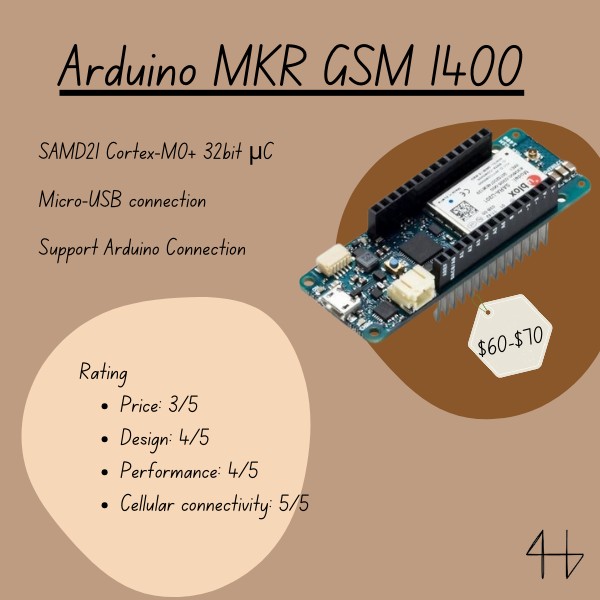
Product Pros
Product Cons
The Arduino MKR GSM 1400 excels in projects requiring cellular connectivity.
Featuring an ATSAMD21 ARM Cortex-M0+ microcontroller and support for 2G and 3G networks, it enables IoT devices to connect via mobile networks, making it ideal for remote monitoring and mobile applications.
Its versatility is further enhanced by various I/O interfaces, allowing for seamless integration with other devices.
However, its higher cost and complexity might be a deterrent for some users. Despite these drawbacks, the Arduino MKR GSM 1400 stands out for its robust cellular capabilities, making it a preferred choice for IoT projects that require reliable mobile network access.
Particle Photon – Best for Cloud Integration
Price: $20-$25
Specifications:
- Broadcom BCM43362 chip supporting 802.11b/g/n Wi-Fi connectivity
- Supports over-the-air firmware updates
- Various interfaces: digital and analog pins, SPI, I2C, UART
Rating:
- Price: 4/5
- Design: 4/5
- Performance: 4/5
- Cloud integration: 5/5
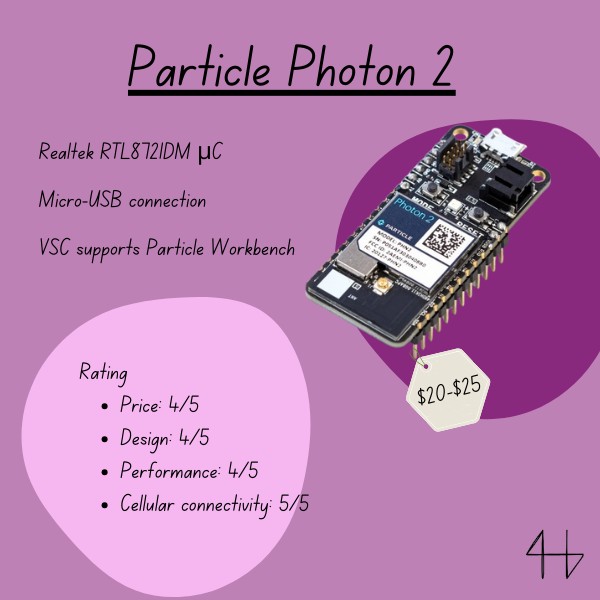
Product Pros
Product Cons
The Particle Photon is designed with cloud integration in mind, making it an excellent choice for connected IoT devices.
Equipped with a Broadcom BCM43362 chip for 802.11b/g/n Wi-Fi connectivity, it ensures seamless internet access for IoT projects. Its ability to support over-the-air firmware updates adds to its flexibility, allowing for remote maintenance and updates.
While its offline capabilities are limited, and it has a smaller community compared to other MCUs, the Particle Photon excels in cloud integration. For developers looking to create IoT devices that leverage cloud services, this MCU offers a streamlined and efficient solution.
Arduino Nano 33 IoT – Best for Compact Applications
Price: $20-$30
Specifications:
- SAMD21 Cortex-M0+ 32-bit low-power ARM MCU
- uBlox NINA W-102 module for WiFi and Bluetooth connectivity
- Onboard IMU LSM6DSC for 6-axis motion sensing
Rating:
- Price: 4/5
- Design: 5/5
- Performance: 3/5
- Compactness: 5/5
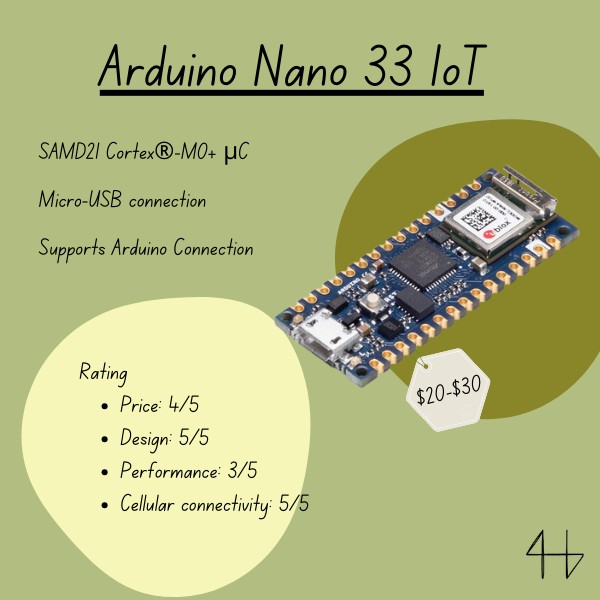
Product Pros
Product Cons
The Arduino Nano 33 IoT is a marvel in a compact design, ideal for applications with a space constraint.
Powered by a SAMD21 Cortex-M0+ 32-bit low-power ARM MCU and featuring a uBlox NINA W-102 module, it ensures reliable WiFi and Bluetooth connectivity. Its onboard IMU provides 6-axis motion sensing, making it perfect for small, sensor-driven projects.
Despite its limited processing power and smaller memory, the Arduino Nano 33 IoT shines in scenarios where compactness is critical.
Its ability to pack essential features into a tiny package makes it an excellent choice for wearable devices and small-scale IoT applications, as well as a versatile IoT development board.
ESP8266 NodeMCU – Best for Low Budget
Price: $2-$10
Specifications:
- Based on the ESP8266 Wi-Fi module
- Supports Lua scripting and Arduino IDE
Rating:
- Price: 5/5
- Design: 3/5
- Performance: 3/5
- Affordability: 5/5
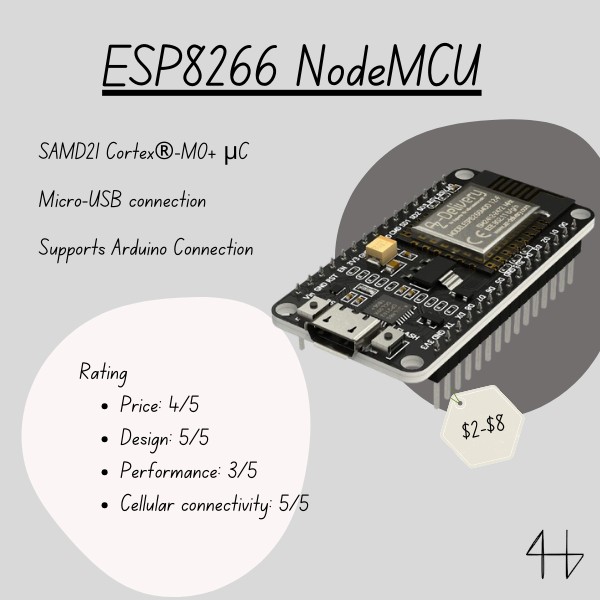
Product Pros
Product Cons
NodeMCU stands out as the best microcontroller for those on a budget. Built on the ESP8266 Wi-Fi module, it provides essential connectivity for a fraction of the cost of other microcontrollers.
Its support for both Lua scripting and the Arduino IDE makes it adaptable to different programming preferences, catering to a wide range of users. It is very easy to program.
Although it lacks the advanced features and processing power of more expensive microcontrollers, NodeMCU’s affordability and versatility make it an excellent choice for simple IoT projects and educational purposes.
Its ease of use and low cost make it accessible to hobbyists and students alike.
Key Considerations When Choosing a Microcontroller for IoT

You’ll need to consider a couple of things before buying your MCU for your next project.
One of the primary factors is the processing power required for your application. An 8-bit microcontroller is suitable for simple tasks, whereas a 32-bit microcontroller is better for more intensive tasks.
Additionally, connectivity options are crucial. Depending on your project’s requirements, you may need cellular, Wi-Fi, Bluetooth, or Thread connectivity. Evaluating these factors ensures that your microcontroller can interact seamlessly with other devices and platforms.
Another critical consideration is power consumption, especially for battery-operated devices. Choosing an efficient power management microcontroller can greatly extend your IoT devices’ operational life.
There are a lot of other factors that will impact your choice, including budget, availability of the MCU in your country, security, and reliability. The last thing you want is your expensive MCU blowing up because it got hacked. (It’s highly unlikely that this will happen, by the way.)
Lastly, ensure the microcontroller has sufficient I/O pins and ports to accommodate all necessary inputs and outputs for your application.
By assessing these factors, you can choose a microcontroller that meets your project’s specific requirements and ensures optimal performance.
Evaluating Processing Power for Your IoT Project

Evaluating the processing power needed for your IoT project is crucial to ensure that the microcontroller can handle the tasks effectively.
Understanding your application’s processing requirements is crucial, as complex IoT applications often need higher processing power for real-time data processing.
Different architectures and memory capacities in microcontrollers impact their performance and task suitability. When selecting a microcontroller, consider the processing speed, program memory, and performance characteristics.
This will help you choose a microcontroller that not only meets the current needs of your IoT project but also allows for scalability and future upgrades.
Connectivity Options and Their Importance
Various communication protocols such as Wi-Fi, Bluetooth, Thread, and cellular connectivity offer unique advantages and limitations.
Wi-Fi is generally more cost-effective for data-heavy applications and offers a range of about 50 meters.
In contrast, cellular connectivity can achieve ranges up to 10 kilometers, making it suitable for remote applications. Each connectivity option must be evaluated based on the IoT device’s requirements for interaction and data communication.
Combining cellular and Wi-Fi connectivity in IoT devices enhances reliability and adaptability to changing needs.
For instance, the ESP32-Gateway provides versatile connectivity options, including Bluetooth Low Energy, wi-fi and Bluetooth, BLE 5.2, and Zigbee, catering to diverse IoT applications.
Similarly, the Arduino MKR GSM 1400 is particularly suited for projects where Wi-Fi is not an option. Careful selection of connectivity options ensures seamless communication and data transfer for IoT devices.
Managing Power Consumption in IoT Devices
Low-power consumption microcontrollers are critical for battery-operated or energy-efficient devices.
Efficient power management increases the time that your project can run for. For instance, the ESP32-S3 is noted for its dual-core processor and integrated wireless capabilities, making it suitable for low-power IoT applications.
Ultra-low power consumption and rapid wake-up times are essential for devices frequently in sleep mode, like smart city sensor nodes.
Efficient energy use in IoT devices also helps manage thermal characteristics, reducing the need for extensive heat management components.
By prioritizing energy efficiency, developers can create more sustainable and cost-effective IoT solutions.
Balancing Cost and Availability
The cost of the microcontroller can vary widely, and it is important to consider this against your project’s scalability.
Microcontrollers with better performance and additional features may justify a higher price, providing enhanced value over time. For instance, incorporating pre-certified wireless connectivity modules can reduce both component selection complexity and overall costs.
Microcontroller availability varies by region, affecting both cost and procurement for IoT microcontrollers in IoT projects.
You must consider the availability of specific microcontroller models in your region to avoid delays in creating your project.
I find that more delays mean that I am less likely to complete the projects that I start.
Understanding local supplier relationships can also help in making cost-effective choices regarding microcontroller procurement. Balancing cost with essential features ensures a good long-term investment for IoT projects.
Ensuring Security and Scalability

IoT devices are generally the weakest point of a network. You might have hear about a casino in the US where their client database was hacked through a smart thermometer in a fishtank.
A big part of the security problem in IoT is that users forget to change the login details from the device defaults. This would be another big part to consider when creating IoT devices.
Microcontrollers need encryption support, secure boot, and secure communication protocols for robust security. Features like data encryption and tamper detection are increasingly important in protecting IoT devices from malicious attacks.
For example, the onboard ECC608 crypto chip in the Arduino Nano 33 IoT provides effective security against various threats.
Evaluate scalability by considering the microcontroller’s potential for future expansion or additional functionality. Open-source hardware certification, as seen with the ESP32-Gateway, supports community-driven development and future flexibility in embedded systems.
Selecting a microcontroller with strong security features and scalability options ensures IoT solutions that are secure and capable of growth.
Assessing Reliability and Quality
Evaluating a microcontroller’s reliability and quality involves assessing the manufacturer’s global presence and commitment to quality.
Ensuring products meet high-reliability standards set by the manufacturer enhances customer satisfaction.
A robust quality framework within a company helps align its strategic goals towards achieving top-tier product reliability. For example, choosing microcontrollers from manufacturers with a strong reputation for quality can greatly reduce the risk of device failures and improve overall project success.
Focusing on reliability and quality ensures IoT projects are built on a solid foundation. This not only helps in achieving long-term success but also enhances the end-user experience by delivering dependable and high-performing IoT devices.
Summary
Selecting the right microcontroller for your IoT project involves careful consideration of various factors including processing power, connectivity options, power consumption, cost, availability, security, scalability, reliability, and quality.
Each microcontroller reviewed in this guide has unique strengths tailored to specific applications, from advanced projects to industrial automation and budget-friendly options. By understanding these key considerations, you can make informed decisions that ensure the success of your IoT projects.
Choose wisely, and let your innovations thrive in the world of the Internet of Things.
Also, send in some of your projects to me. I would love to see what you all are making!
Frequently Asked Questions

What is a microcontroller in IoT?
A microcontroller in IoT is a compact, self-sufficient computer embedded in devices to provide processing power, memory, and control for specific functions. This makes them essential for operating smart devices and enabling connectivity within the Internet of Things.
Is Arduino used for IoT?
Arduino is indeed used for IoT applications, as it can interface with various sensors to collect data from the physical world. This capability makes it a popular choice for developing innovative IoT solutions.
Which IoT board is best?
The best IoT boards include the STM32 Nucleo Board, Particle Photon 2, and Arduino Portenta H7. For specific needs, other notable options are the ESP32-S3 and BeagleBone Green Gateway.
Which technology is best for IoT?
The best technology for IoT depends on your specific coverage needs; for wide coverage, cellular networks are ideal, whereas LPWAN is suitable for low-power devices over large areas. For short-range applications, Wi-Fi and Bluetooth are recommended, while satellite technology offers global connectivity despite higher costs.
Which microcontroller is best for IoT?
The Espressif ESP8266 and ESP32 series are the best microcontrollers for IoT projects, with the ESP8266 being cost-effective with integrated Wi-Fi, and the ESP32 providing enhanced features like Bluetooth and dual-core processing.


